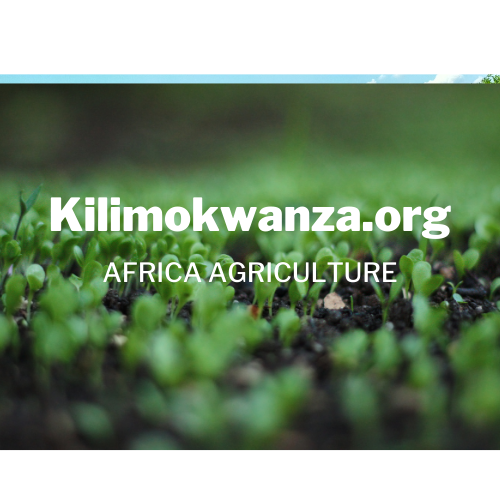Boosting Soybean Productivity: Tanzania’s Road to Agricultural Prosperity
Kilimokwanza.org Reporter
In the lush Southern Highlands of Tanzania, a transformative project is taking shape, as detailed in the 2023 publication “Tanzania Sustainable Soybean Initiative – Building a Business Case for a Long-Term Investment” by the SAGCOT Centre Limited.
The presentation details – the characteristics of soybean growers, hotspot areas, input demand, and projected production – 2023.
The Tanzania Sustainable Soybean Initiative (TSSI) aims to transform the soybean sector from subsistence to sustainable prosperity. This initiative is focused on soybean production hotspots such as Iringa, Mbeya, and Rukwa, among others, where clusters of farmers are engaging in innovative agricultural practices to enhance productivity and livelihoods.
Despite the potential for higher yields, soybean farmers in these regions face significant hurdles. Most of these farmers operate small plots, averaging just 1.3 acres, resulting in low productivity. Data from TSSI shows that average yields are significantly below the potential, with most farmers harvesting around 725 kg per hectare, a figure starkly lower than what could be achieved with optimal farming methods.
A deeper dive into the practices and challenges reveals that only a fraction of farmers use fertilizers and manure, and the availability of quality seeds remains a major issue. Most soybean seeds are informally obtained and recycled, which can lead to lower yields. Furthermore, the lack of critical inputs like inoculants, essential for nitrogen fixation in soybeans, exacerbates the productivity challenges.
However, TSSI is not just diagnosing problems but is actively working to resolve them. The initiative has employed a comprehensive strategy that includes farmer profiling using a geo-referenced database to deliver data-driven agricultural interventions. This season, the project will leverage the Farmer-MBA tool to provide field-specific advice to farmers on optimal fertilizer and seed usage.
Moreover, the project has identified soybean ‘hotspots’ where it has trained extension officers and established demonstration farms to showcase best practices. These efforts are complemented by improved access to markets, financial services, and knowledge, which collectively aim to address productivity constraints and ultimately enhance farmers’ incomes and livelihoods.
As TSSI continues to expand its footprint, the hope is that the soybean sector in Tanzania will not only meet domestic demand but also contribute significantly to the region’s economy. The journey of Tanzanian farmers, from struggling to thrive, reflects a broader ambition within the agricultural sector to achieve sustainability and economic resilience.
For smallholder farmers like those in Songwe and Ruvuma, the support from TSSI could be transformative, offering a pathway out of poverty and into prosperity. With continued investment and adopting improved agricultural practices, Tanzania’s soybean fields could soon yield a bumper crop, both economically and agriculturally.
Key Numbers and Their Significance
- Average Plot Size: 1.3 acres (0.52 hectares)
- This indicates the average size of soybean farms among smallholders in the initiative. Smaller plot sizes can be challenging for achieving economies of scale and can influence the type of feasible agricultural practices.
- Average Soybean Yields: 725 kg/ha (294 kg/acre)
- These figures highlight the current production levels per hectare and acre. They are significantly lower than potential yields, indicating opportunities for improvement in farming practices, seed quality, and input usage.
- Fertilizer Use: 17%
- Only 17% of farmers apply fertilizer to soybean crops, which is low and suggests a potential area for increasing productivity through better nutrient management.
- Manure Use: 8%
- Like fertilizer, the low use of manure underscores the underutilization of organic inputs that could enhance soil fertility and crop yields.
- Soybean Seed Sources: 44% use their seeds
- Many farmers use recycled or saved seeds from previous seasons, which may not be as productive or disease-resistant as certified seeds. This practice is common where access to quality seeds is limited.
- Intercropping: 63% do not intercrop soybeans
- Most farmers grow soybeans as a sole crop rather than mixing with other crops. Intercropping can benefit soil health and provide a buffer against total crop failure.
- Number of Farmers Registered in Ruvuma: 10,000
- This region has the highest number of registered soybean farmers, indicating a significant concentration of soybean farming activity.
- Total Seeds Required for Projected Planting Area: 615 Metric Tons
- This is the total amount of soybean seeds estimated to be needed for the upcoming planting season across all regions involved in the initiative.
- Total Fertilizer Demand: 1,024 tons of DAP
- The demand for Di-ammonium Phosphate (DAP) fertilizer across the regions highlights the input needs for the projected cultivation area.
- Projected Soybean Production for Songwe Region: 1,040 Metric Tons
- This example of specific regional output expectations is helpful for market planning and logistical considerations.
Some of the organizations behind the Tanzania Sustainable Soybean Initiative (TSSI), with SAGCOT Centre as the secretariat.
- Southern Agricultural Growth Corridor of Tanzania (SAGCOT) – A partnership to foster inclusive, sustainable agricultural growth in Tanzania.
- Farm to Market Alliance – An initiative focused on improving agricultural markets for smallholder farmers by providing access to markets and agricultural inputs.
- World Food Programme (WFP) – The food-assistance branch of the United Nations, which works to combat hunger worldwide, often by supporting agricultural development.
- Consultative Group on International Agricultural Research (CGIAR): This global partnership unites organizations engaged in research for a food-secured future.
- ASPIRES Tanzania (Agricultural Sector Policy and Institutional Reforms Strengthening) – An initiative to strengthen policy and institutional frameworks to support agricultural sector growth and improvements.
- International Institute of Tropical Agriculture (IITA)—IITA is one of the leading research partners in agricultural science and innovation to improve livelihoods in Africa. For the TSSI project, IITA contributes its expertise in agricultural research, specifically in improving crop productivity and sustainability. Their work often involves developing new agricultural techniques, studying crop disease resistance, and enhancing soil health to support the sustainable intensification of agriculture.


